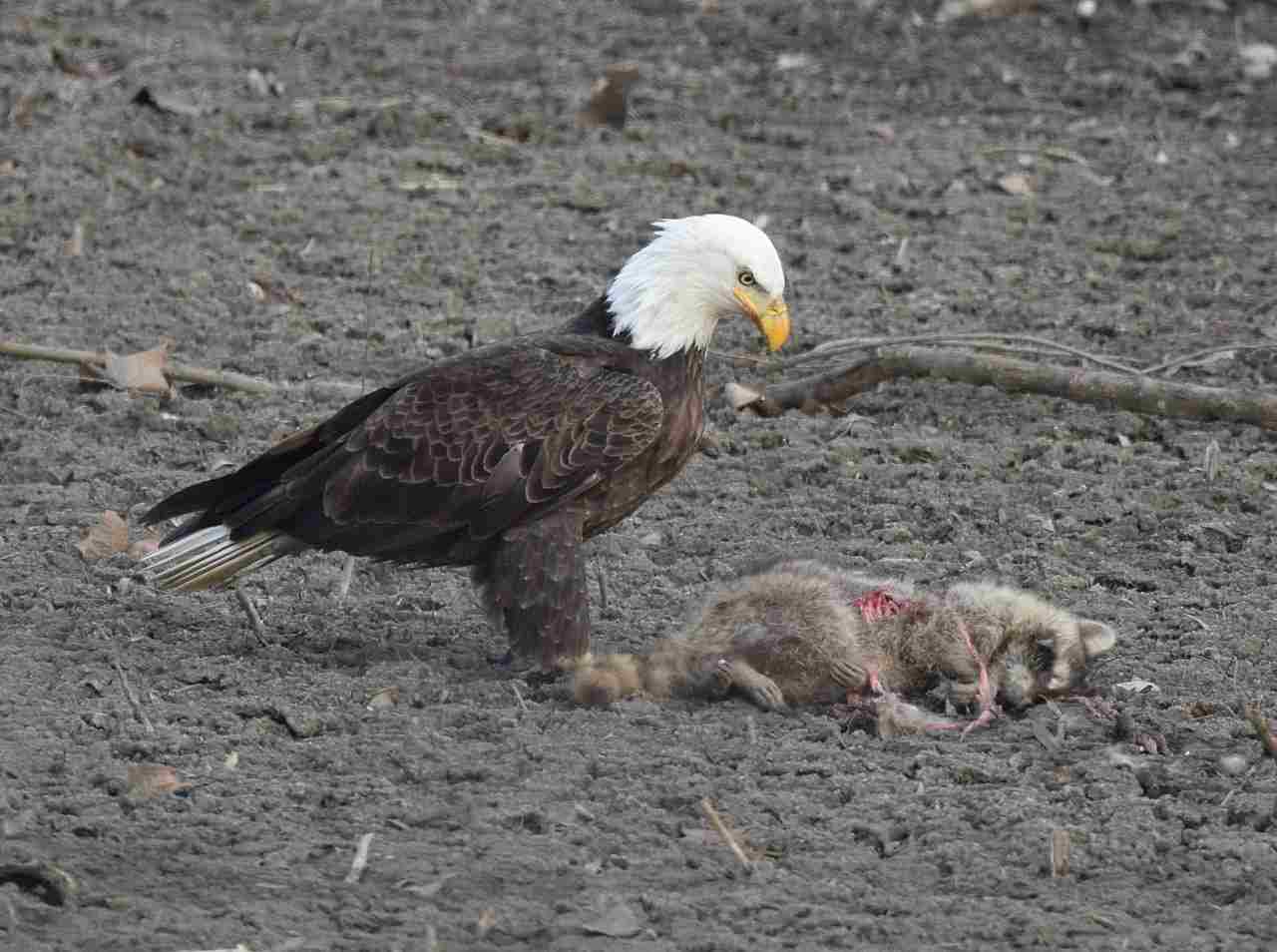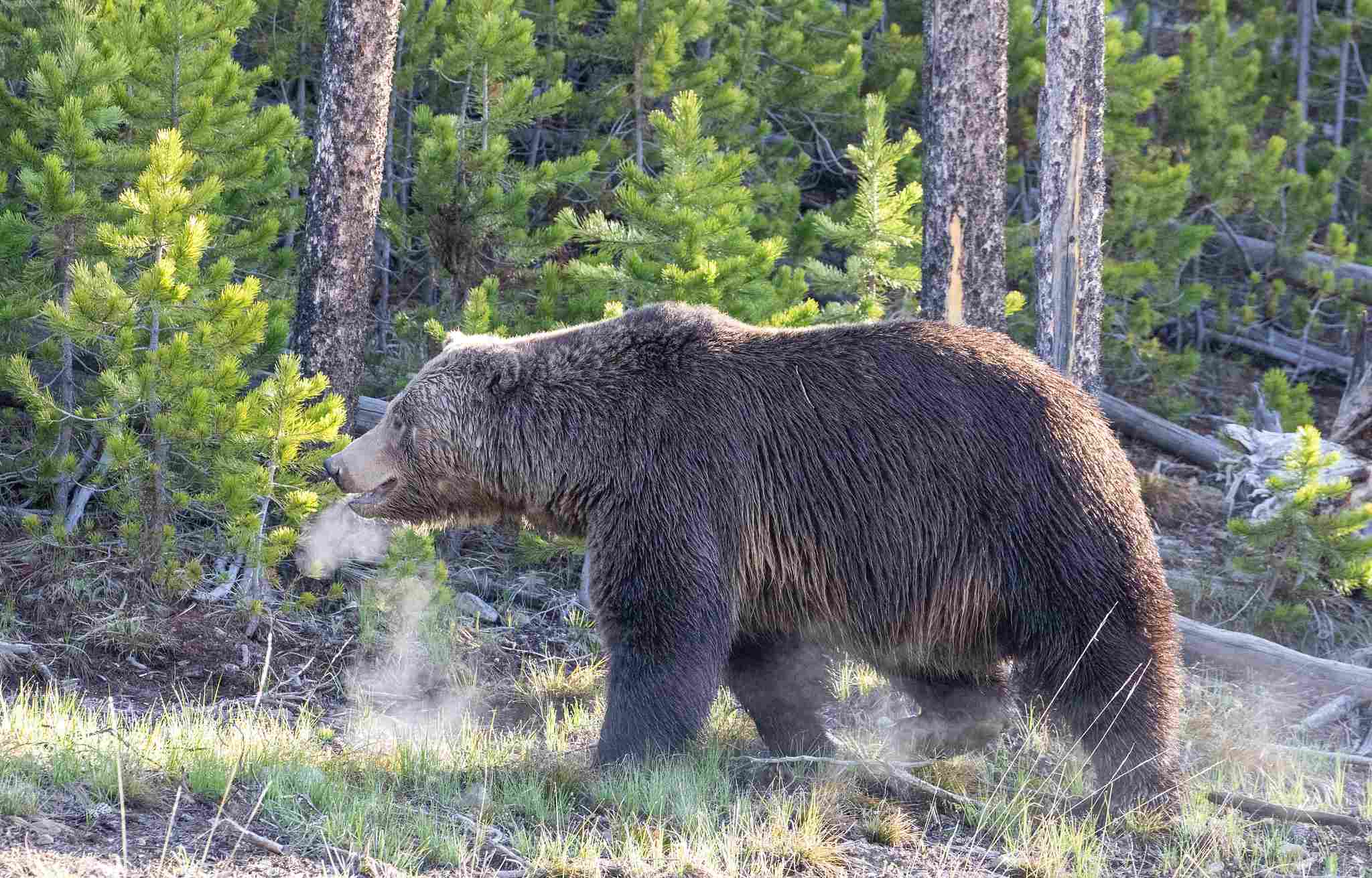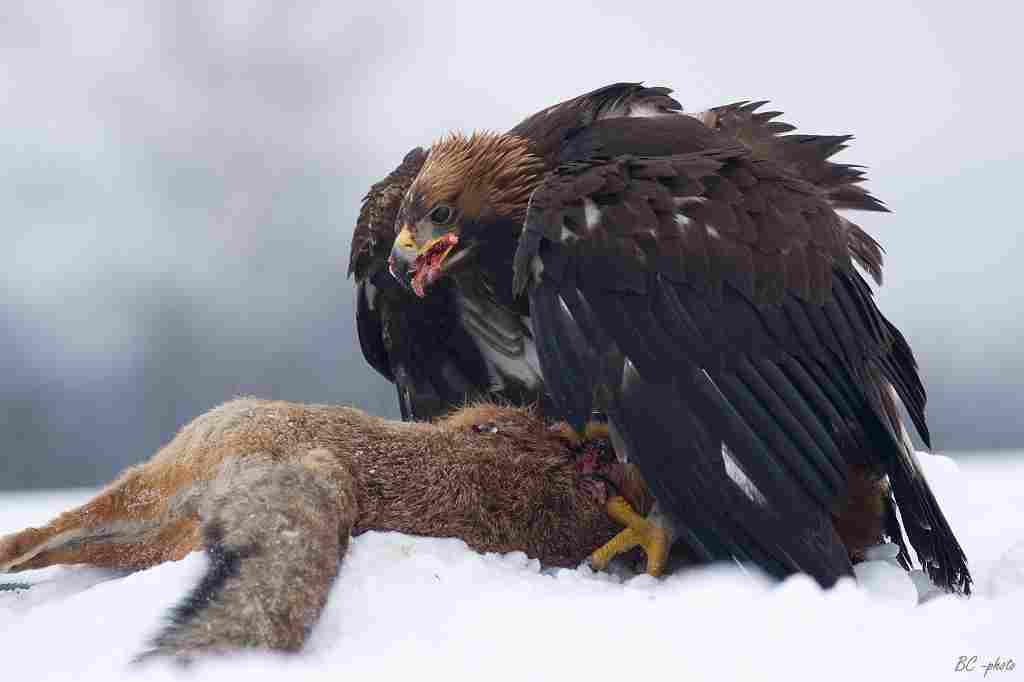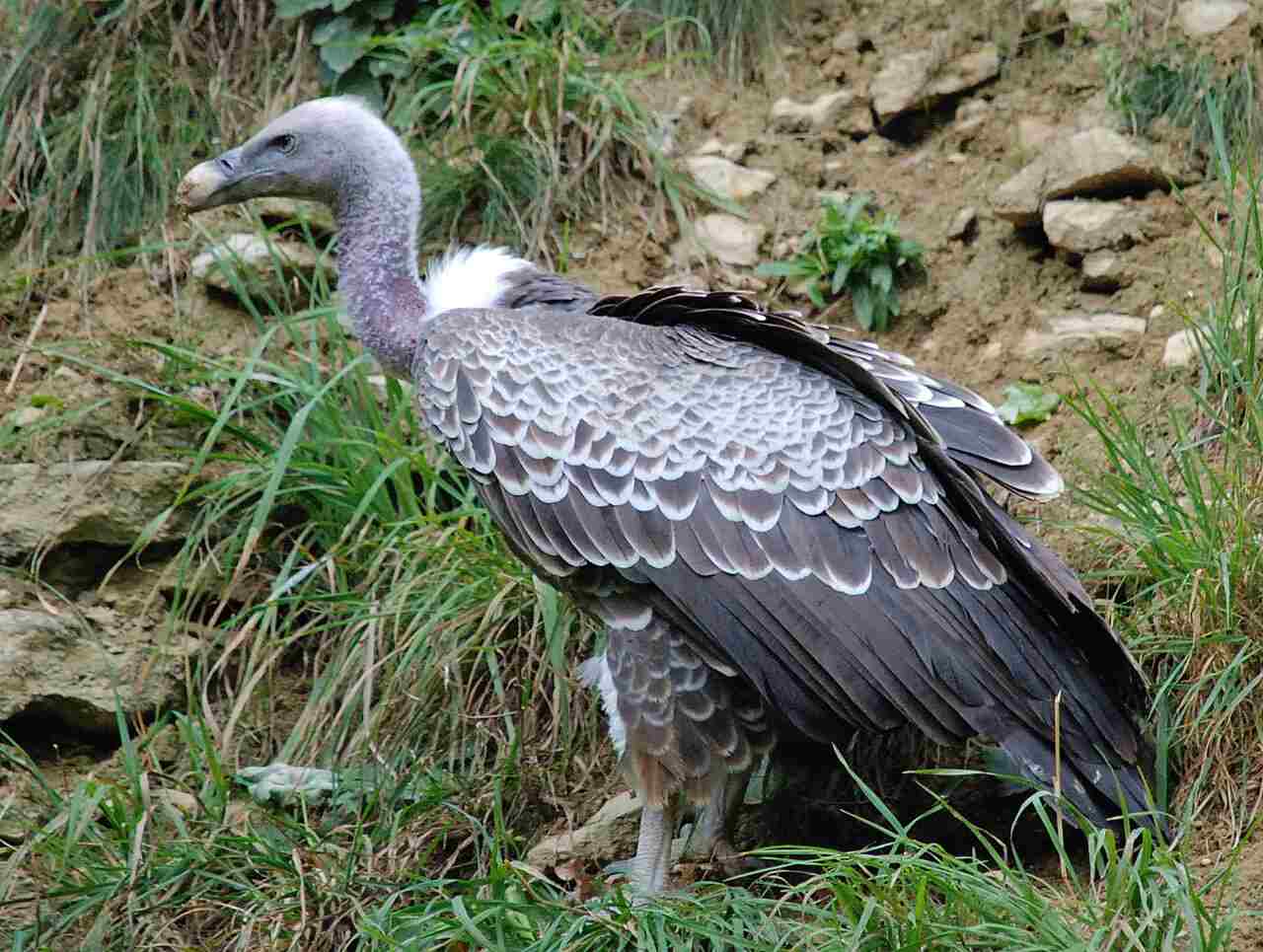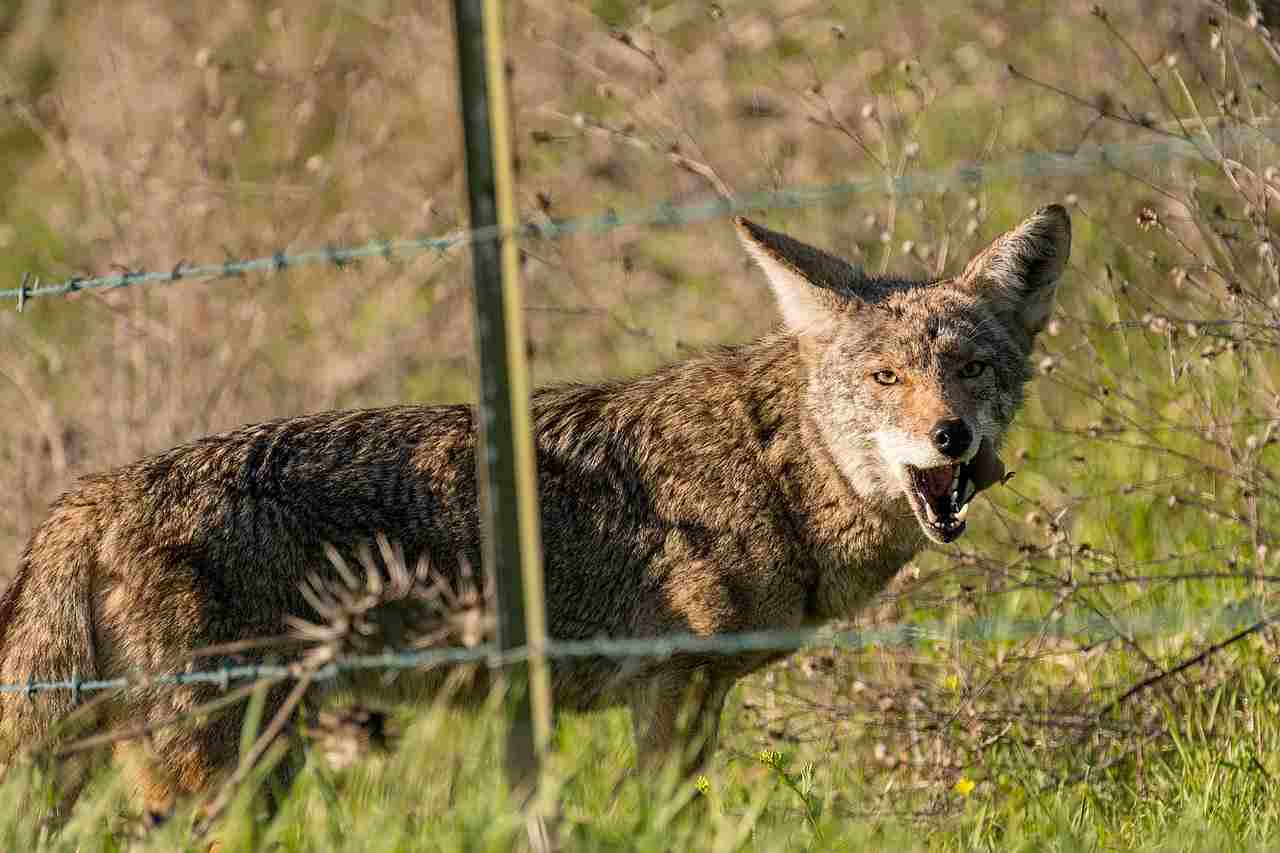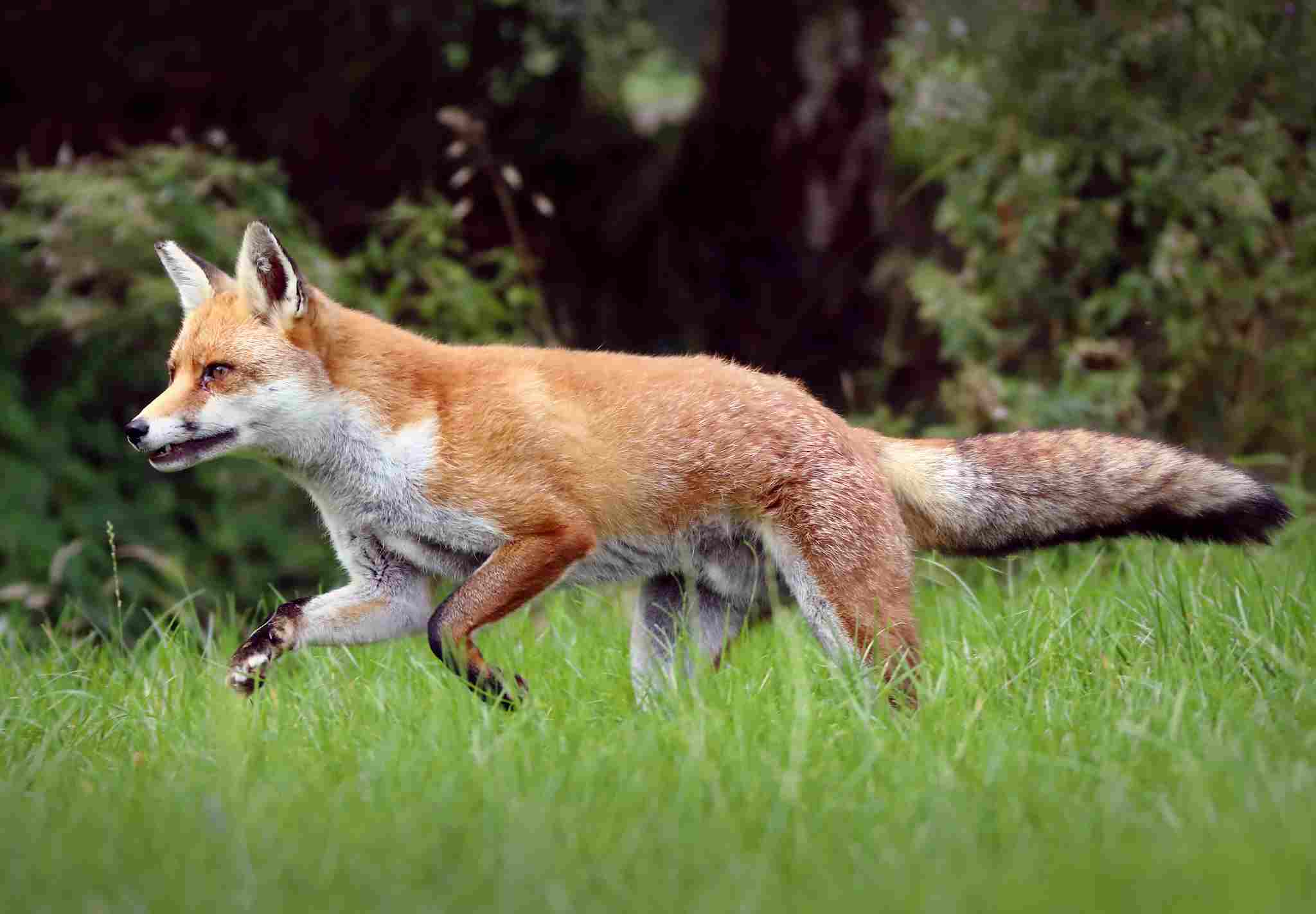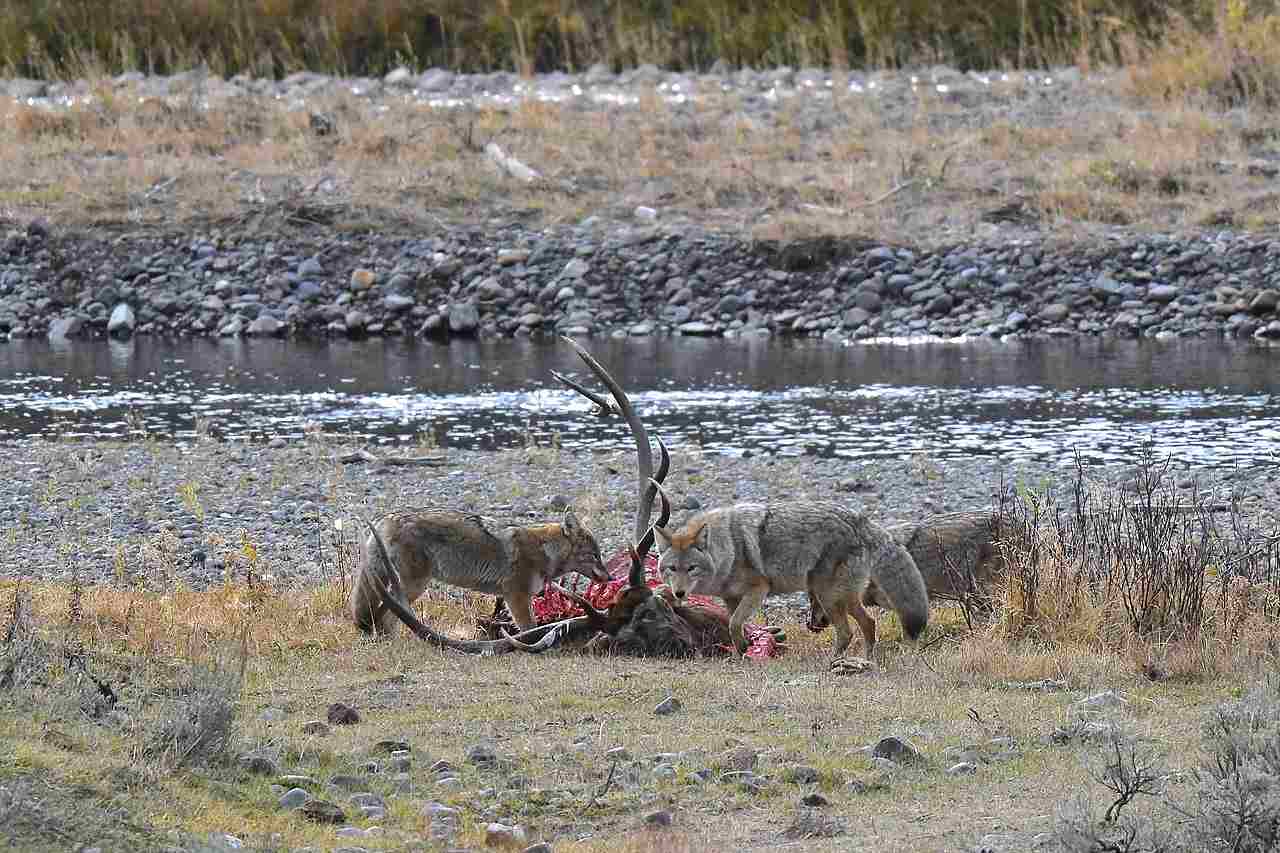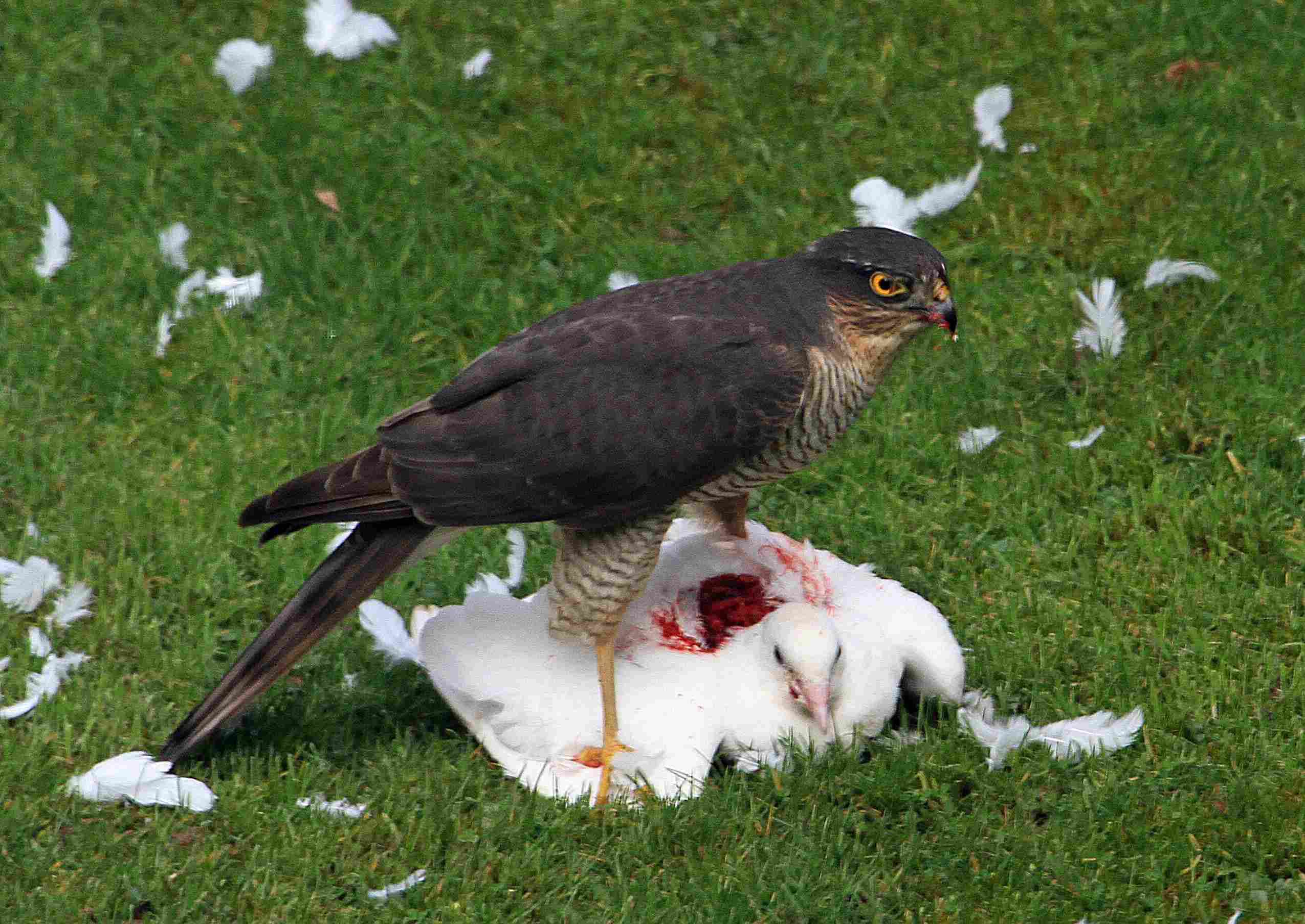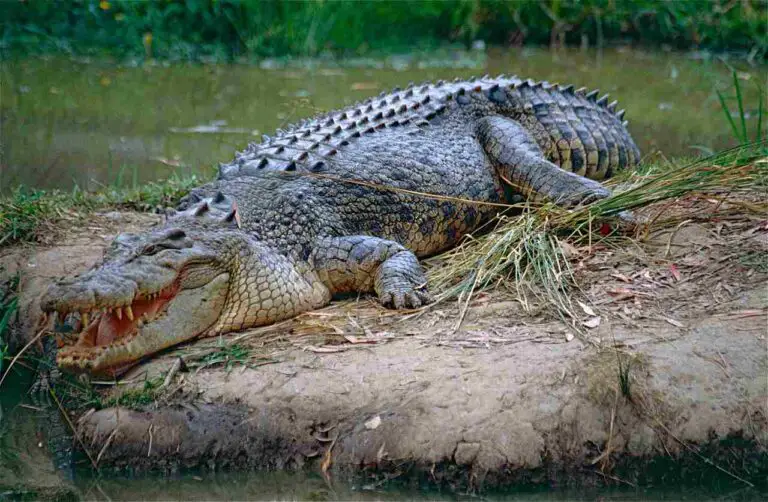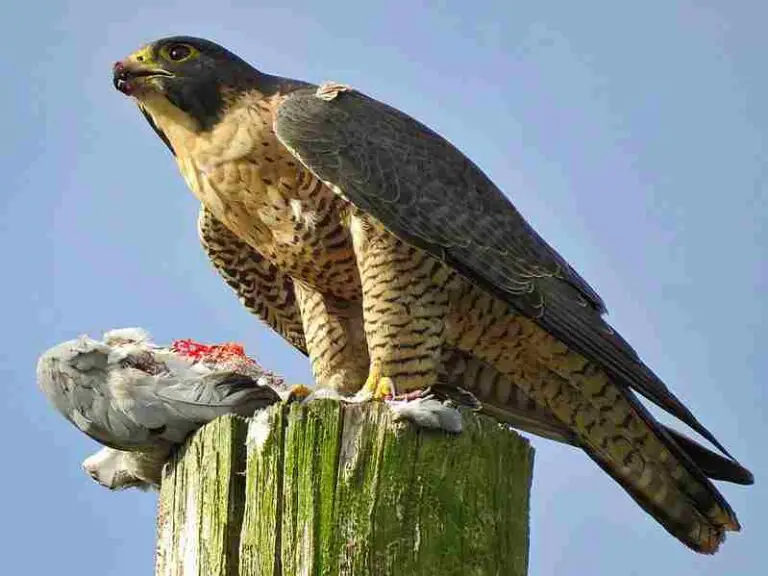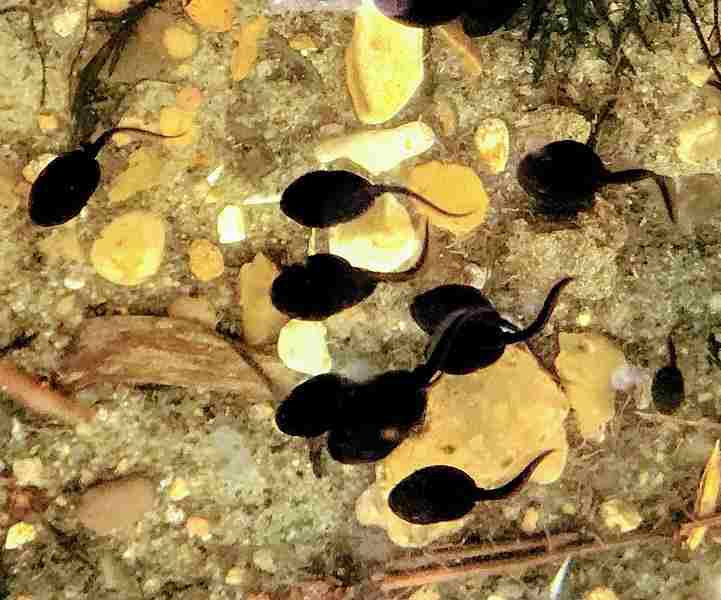7+ Scavengers In Yellowstone National Park Discussed
Examples of scavengers in Yellowstone National Park are coyotes, ravens, bears, red foxes, vultures, hawks, eagles, and raccoons. These animals play a vital role in maintaining the ecosystem’s balance by consuming dead animals, which helps recycle nutrients and reduces the spread of disease. Each scavenger has unique characteristics and behaviors, from coyotes’ adaptability to vultures’ keen sense of smell and bears’ strength. Together, they contribute to the park’s cleanliness and the natural recycling of organic matter. Properly managing food and waste in the park helps ensure these scavengers remain a harmonious part of the Yellowstone landscape.
1. Coyote
The coyote (Canis latrans) is a common scavenger in Yellowstone National Park, often spotted traversing open meadows and forest edges. Known for their adaptability and cunning, coyotes have a varied diet that includes both live prey and carrion. Within the park, they play a significant role in the ecosystem by cleaning up carcasses left behind by larger predators like wolves and bears, which helps to keep the environment tidy and reduce the spread of disease.
Coyotes are smaller than wolves, with a slender build, pointed ears, and a bushy tail. Their coats range from gray to reddish-brown, allowing them to blend in with their surroundings. These animals are highly social, typically living in family groups or pairs, and they communicate through a range of vocalizations, including howls, yips, and barks.
In Yellowstone, coyotes can be seen scavenging along riverbanks, in valleys, and near the roads where roadkill is sometimes found. They are opportunistic feeders, meaning they will eat whatever food source is available, including small mammals, birds, insects, and berries. However, their scavenging behavior often brings them into conflict with humans, especially when they approach campgrounds or other areas where food waste might be accessible.
Overall, the coyote’s role as a scavenger in Yellowstone is vital for maintaining a balanced ecosystem. By consuming carrion, they help break down organic matter and contribute to the nutrient cycle, while also keeping the park clean. Despite their sometimes negative reputation, coyotes are a key component of Yellowstone’s complex and diverse wildlife community.
2. Raven
The raven (Corvus corax) is a highly intelligent scavenger found throughout Yellowstone National Park. These large, black birds are known for their problem-solving skills and complex social behaviors. As scavengers, ravens play a critical role in the ecosystem by consuming a wide range of carrion, helping to recycle nutrients and prevent the spread of disease.
Ravens are frequently seen near carcasses left by larger predators, where they often congregate in groups to feed. Their intelligence allows them to anticipate where food might become available, and they are adept at following predators like wolves, bears, and coyotes to scavenge from their kills. Ravens also exhibit a keen sense of curiosity, often interacting with park visitors and exploring campsites for food scraps.
Beyond scavenging, ravens have a diverse diet that includes insects, small mammals, fruits, and grains. They are also known to use tools and can mimic sounds, demonstrating their remarkable cognitive abilities. Their presence in Yellowstone adds an element of intrigue, as visitors often marvel at their playful behavior and aerial acrobatics.
3. Bear
Yellowstone National Park is home to two species of bears: the grizzly bear (Ursus arctos horribilis) and the black bear (Ursus americanus). While bears are primarily known as predators and omnivores, they also act as scavengers, particularly when food sources are scarce or during certain seasons.
Grizzly bears, the larger of the two species, are more likely to scavenge from wolf kills, especially in the early spring when they emerge from hibernation. During this time, bears rely heavily on carcasses to replenish lost energy and fat reserves. Grizzlies are powerful animals, capable of driving away other scavengers, including wolves and coyotes, to claim a meal.
Black bears, while smaller, also exhibit scavenging behavior, though they are generally more reclusive than grizzlies. They may be found foraging along trails or in forests, seeking out carrion or other sources of food such as berries, nuts, or insects. Both species of bears contribute to the park’s ecosystem by breaking down organic matter and returning nutrients to the soil.
4. Red Fox
The red fox (Vulpes vulpes) is another scavenger commonly found in Yellowstone National Park. Known for their striking red coats and bushy tails, red foxes are versatile and adaptive animals. While they primarily hunt small mammals, birds, and insects, they also scavenge for carrion, particularly during the winter when food is scarce.
Red foxes are solitary animals, typically operating within defined territories. They are often seen at the edges of forests or near open fields, where they can easily spot prey or carrion. Their keen senses of sight and smell allow them to locate food from a distance, and they are agile enough to navigate through dense vegetation to reach a meal.
In addition to scavenging, red foxes are known for caching food, burying it to consume later. This behavior helps them survive periods of food scarcity and contributes to the redistribution of organic matter within the park. Their playful demeanor and distinctive appearance make them a favorite among park visitors, who often encounter them along roadsides or hiking trails.
5. Vulture
Vultures are quintessential scavengers in Yellowstone National Park, with the most common species being the turkey vulture (Cathartes aura). These large birds are easily recognized by their broad wings, long tails, and bald red heads. Vultures are highly efficient scavengers, using their keen eyesight and excellent sense of smell to locate carrion from high in the sky.
In Yellowstone, vultures play a vital role in the ecosystem by consuming dead animals, preventing the spread of disease and aiding in the decomposition process. They are often seen soaring in wide circles, using thermal currents to stay aloft while scanning the landscape for signs of carrion. When a carcass is located, vultures typically gather in groups, and their strong stomach acids allow them to consume even decaying flesh without harm.
Despite their somewhat grim reputation, vultures are an essential part of Yellowstone’s food web, helping to recycle nutrients and clean the environment. They are generally non-aggressive and prefer to avoid human contact, which contributes to their role as discreet cleaners of the park’s landscapes.
6. Hawk
Hawks are common birds of prey in Yellowstone National Park, with various species, such as the red-tailed hawk (Buteo jamaicensis) and the rough-legged hawk (Buteo lagopus). While hawks are primarily known for hunting small mammals, birds, and reptiles, they also exhibit scavenging behavior, especially when food is scarce or when an easy meal is available.
Hawks in Yellowstone are often seen perched on high vantage points, such as trees or rock outcroppings, where they can scan the area for prey or carrion. They are powerful fliers and can quickly cover large distances in search of food. When they find carrion, they may compete with other scavengers like ravens or vultures for access to the meal.
Although hawks typically prefer fresh kills, they will scavenge from carcasses, especially during winter or early spring when other food sources may be limited. This scavenging behavior helps them conserve energy and maintain their strength during lean times. Hawks contribute to the ecosystem by controlling small mammal populations and assisting in the breakdown of organic matter through their scavenging activities.
7. Eagle
Yellowstone National Park is home to several eagle species, with the bald eagle (Haliaeetus leucocephalus) and the golden eagle (Aquila chrysaetos) being the most prominent. These majestic birds of prey are renowned for their hunting skills, but they also play a significant role as scavengers, particularly during the winter months when prey can be scarce.
Bald eagles, with their striking white heads and tails, are often seen near bodies of water, where they hunt fish but also scavenge on carcasses along riverbanks or lakeshores. They often feed on the remains of animals left behind by other predators or seek out roadkill. Golden eagles, known for their powerful build and hunting prowess, primarily feed on small mammals but will also scavenge from larger carcasses, particularly during winter when snow limits their hunting range.
Eagles play an important role in the ecosystem by recycling nutrients and helping to keep Yellowstone clean by consuming carrion. Their presence can also deter smaller scavengers, ensuring that carcasses are fully consumed, reducing waste and potential disease spread. Beyond their ecological role, eagles are a significant draw for park visitors, who often gather to witness these magnificent birds in their natural habitat.
8. Raccoon
Raccoons (Procyon lotor) are resourceful scavengers in Yellowstone National Park, recognized for their distinctive black mask markings and bushy ringed tails. Although they are not as commonly seen as other scavengers, raccoons are widespread and adaptable, often living near water sources such as rivers, streams, and marshes. They have a varied diet, feeding on a mix of plants, small animals, and carrion.
In Yellowstone, raccoons are known to scavenge in various environments, including forested areas, riverbanks, and campgrounds. Their dexterous paws allow them to manipulate objects and access food sources that might be challenging for other animals. They are nocturnal, which means they are more active at night, often exploring campsites for leftover food or trash. This behavior, while essential for their survival, can lead to conflicts with humans, emphasizing the need for proper food storage and waste management in the park.
Raccoons contribute to Yellowstone’s ecosystem by consuming carrion and reducing waste, helping to break down organic matter. Their adaptability allows them to thrive in various habitats, and their curious nature often leads to interesting encounters with park visitors. Despite their sometimes troublesome reputation, raccoons are an integral part of the park’s scavenger community.
*Summary
-
Coyote (Canis latrans)
-
Common scavenger in Yellowstone, seen in meadows and forest edges.
-
Varied diet includes live prey and carrion.
-
Helps clean up carcasses, reducing disease spread.
-
Communicates through howls, yips, and barks.
-
Often scavenges along riverbanks, valleys, and roads.
-
-
Raven (Corvus corax)
-
Large black birds with high intelligence and social behavior.
-
Scavenge near carcasses left by predators.
-
Known for problem-solving skills and aerial acrobatics.
-
Diet includes insects, small mammals, and carrion.
-
Contributes to ecosystem by breaking down organic matter.
-
-
Bear
-
Two species in Yellowstone: grizzly (Ursus arctos horribilis) and black bear (Ursus americanus).
-
Bears act as scavengers, especially in early spring.
-
Grizzlies often scavenge from wolf kills; black bears are more reclusive.
-
Both species help in nutrient cycling and cleaning the environment.
-
-
Red Fox (Vulpes vulpes)
-
Known for their red coats and bushy tails.
-
Primarily hunt small mammals but also scavenge for carrion.
-
Cache food for later consumption, aiding in nutrient redistribution.
-
Often seen in forest edges and open fields.
-
-
Vulture
-
Turkey vulture (Cathartes aura) is the common species in Yellowstone.
-
Recognized by broad wings and bald red heads.
-
Scavenge dead animals, preventing disease spread and aiding decomposition.
-
Gather in groups at carcasses and soar on thermal currents.
-
-
Hawk
-
Includes red-tailed hawk (Buteo jamaicensis) and rough-legged hawk (Buteo lagopus).
-
Primarily hunt small mammals but also scavenge for carrion.
-
Perch on high vantage points to scan for food.
-
Assist in controlling small mammal populations and nutrient recycling.
-
-
Eagle
-
Bald eagle (Haliaeetus leucocephalus) and golden eagle (Aquila chrysaetos) are prominent.
-
Bald eagles often near water, golden eagles primarily hunt small mammals.
-
Scavenge along riverbanks, lakeshores, and from larger carcasses.
-
Their presence can deter smaller scavengers and help fully consume carcasses.
-
-
Raccoon (Procyon lotor)
-
Known for black mask markings and bushy ringed tails.
-
Often live near water sources and are adaptable scavengers.
-
Dexterous paws allow them to access various food sources.
-
Active at night, often exploring campgrounds for food scraps.
-
Help reduce waste and contribute to nutrient cycling.
-
| Scavenger | Key Features |
| Coyote |
Found in meadows and forest edges; varied diet with live prey and carrion; helps clean up carcasses; communicates through howls and barks.
|
| Raven |
Large black birds with high intelligence; scavenge near predator kills; problem-solving skills; diverse diet including insects and carrion; aids in nutrient cycling.
|
| Bear |
Grizzly and black bear; scavenger behavior especially in early spring; grizzlies often scavenge wolf kills; black bears are more reclusive; contribute to nutrient cycling.
|
| Red Fox |
Known for red coats and bushy tails; hunts small mammals and scavenges carrion; caches food; often seen at forest edges and open fields.
|
| Vulture |
Turkey vulture with broad wings and bald red heads; scavenge dead animals, preventing disease spread; gather in groups at carcasses; soar on thermal currents.
|
| Hawk |
Includes red-tailed hawk and rough-legged hawk; primarily hunt small mammals; also scavenge; perch on high points to scan for food; assist in nutrient recycling.
|
| Eagle |
Bald eagle and golden eagle; bald eagles often near water; golden eagles hunt small mammals; scavenge along riverbanks and lakeshores; deter smaller scavengers.
|
| Raccoon |
Known for black mask markings and bushy ringed tails; often live near water; nocturnal scavenger; explores campgrounds for food scraps; helps reduce waste.
|
FAQ: Scavengers in Yellowstone National Park
Q1: What role do scavengers play in Yellowstone National Park?
A1: Scavengers in Yellowstone play a crucial role in maintaining ecosystem balance by consuming dead animals (carrion), which helps to recycle nutrients and reduce the spread of disease. They also contribute to controlling waste and keeping the park clean.
Q2: Are scavengers in Yellowstone dangerous to humans?
A2: Generally, scavengers in Yellowstone are not dangerous to humans. However, it’s essential to respect wildlife and keep a safe distance. Some scavengers, like bears, can be aggressive if they feel threatened, while others, like raccoons, might approach campsites in search of food. Following park guidelines and storing food properly helps avoid negative interactions.
Q3: How can visitors avoid attracting scavengers while in Yellowstone?
A3: Visitors can avoid attracting scavengers by properly storing food and trash, following park rules, and keeping campsites clean. Avoid feeding wildlife, as this can create dangerous situations for both animals and humans.
Q4: Which scavengers are most commonly seen in Yellowstone National Park?
A4: The most commonly seen scavengers in Yellowstone include coyotes, ravens, bears, red foxes, vultures, hawks, eagles, and raccoons. They are frequently observed near roads, trails, and other areas where they can find food or carrion.
Q5: Are scavengers in Yellowstone active year-round?
A5: Yes, scavengers in Yellowstone are active year-round. However, their behavior may vary with the seasons. For example, bears are more likely to scavenge in early spring after emerging from hibernation, while some birds, like hawks and eagles, might adjust their diet based on food availability.
Q6: What are some precautions to take when encountering scavengers in Yellowstone?
A6: If you encounter scavengers in Yellowstone, maintain a safe distance and do not approach or feed them. Keep food and trash properly secured, especially in areas where scavengers are known to frequent. Follow park guidelines and report any aggressive behavior to park rangers.
Q7: How do scavengers impact the ecosystem in Yellowstone National Park?
A7: Scavengers impact the ecosystem by cleaning up dead animals, aiding in decomposition, and recycling nutrients back into the environment. They also help control smaller animal populations and play a role in the food web by competing with other predators and scavengers.
